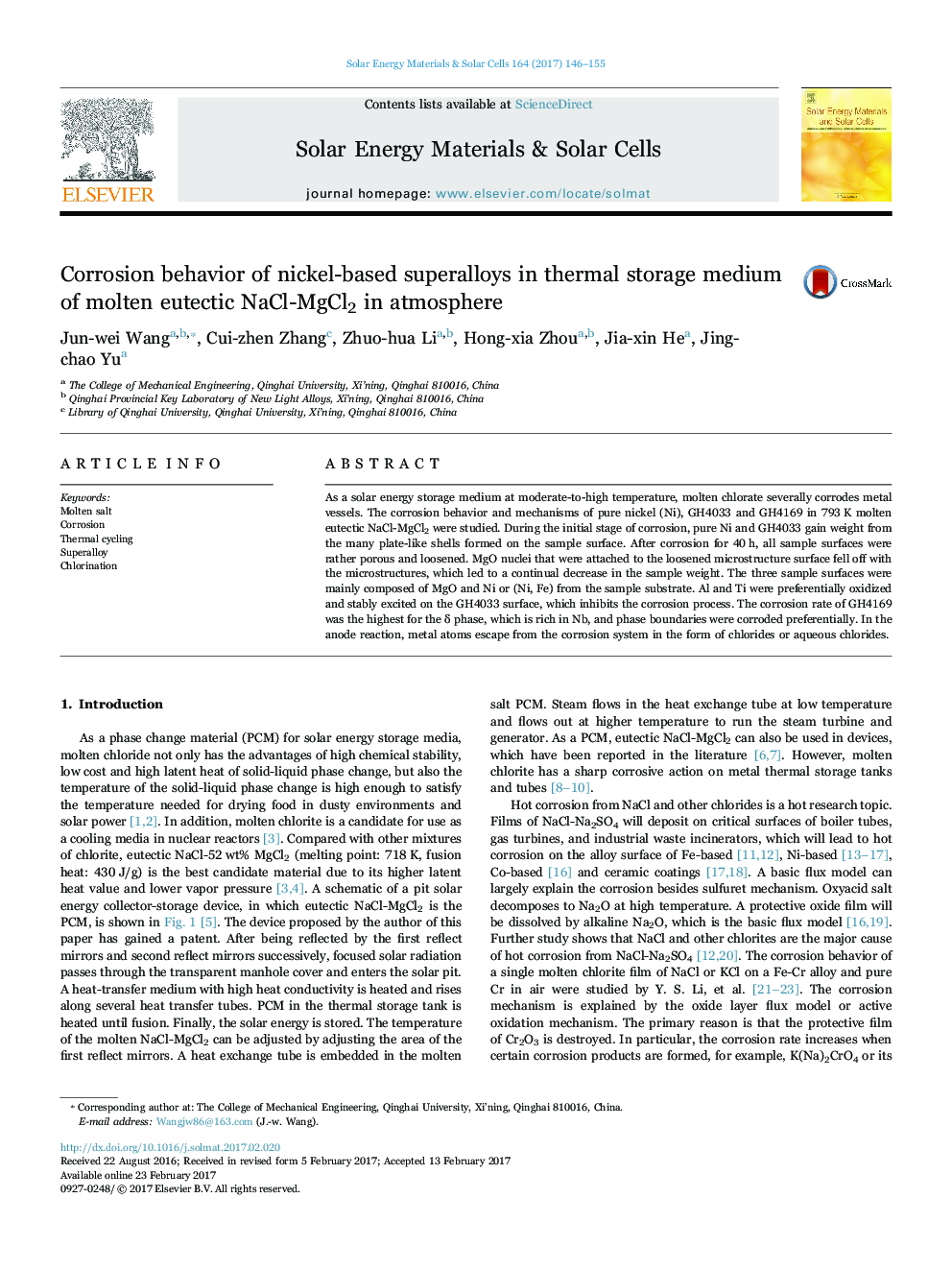| Article ID | Journal | Published Year | Pages | File Type |
|---|---|---|---|---|
| 6457119 | Solar Energy Materials and Solar Cells | 2017 | 10 Pages |
â¢MgO nucleation and peeling off play an important role in the corrosion process.â¢Combined effect of dissolution, oxidization and chlorination as mechanism was raised.â¢Effects of Ti, Al and δ phase which with rich Nb on corrosion behavior were studied.â¢Corrosion behavior of nickel based superalloys in molten NaCl-MgCl2 was studied.
As a solar energy storage medium at moderate-to-high temperature, molten chlorate severally corrodes metal vessels. The corrosion behavior and mechanisms of pure nickel (Ni), GH4033 and GH4169 in 793 K molten eutectic NaCl-MgCl2 were studied. During the initial stage of corrosion, pure Ni and GH4033 gain weight from the many plate-like shells formed on the sample surface. After corrosion for 40 h, all sample surfaces were rather porous and loosened. MgO nuclei that were attached to the loosened microstructure surface fell off with the microstructures, which led to a continual decrease in the sample weight. The three sample surfaces were mainly composed of MgO and Ni or (Ni, Fe) from the sample substrate. Al and Ti were preferentially oxidized and stably excited on the GH4033 surface, which inhibits the corrosion process. The corrosion rate of GH4169 was the highest for the δ phase, which is rich in Nb, and phase boundaries were corroded preferentially. In the anode reaction, metal atoms escape from the corrosion system in the form of chlorides or aqueous chlorides.
Graphical abstractDownload high-res image (525KB)Download full-size image
